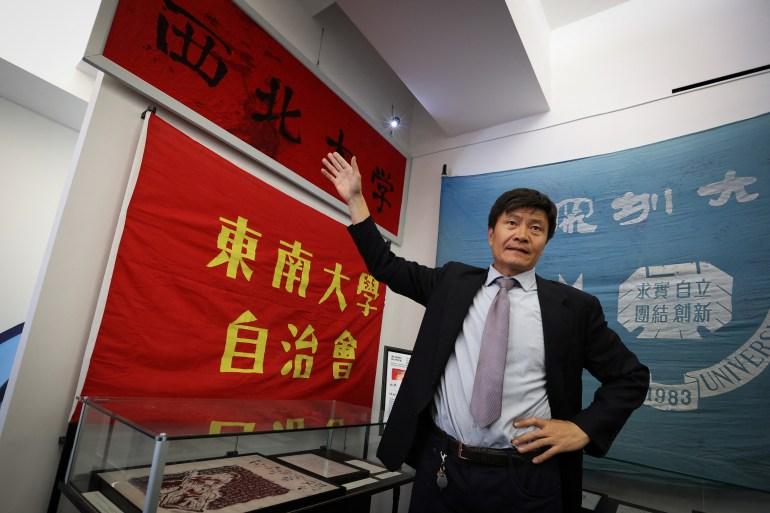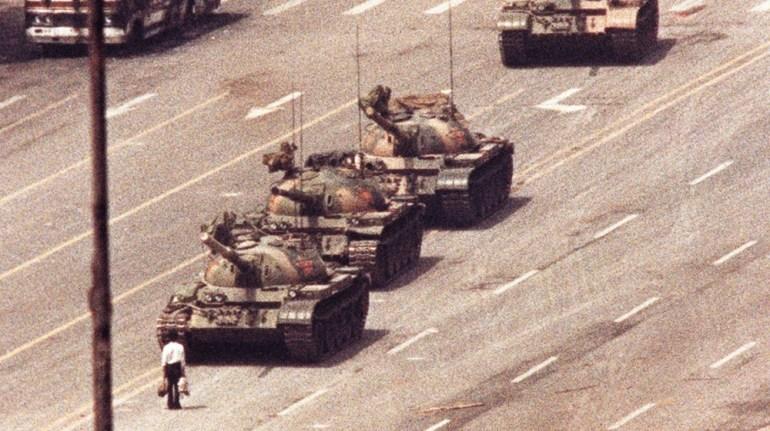Source: ALJAZEERA
ALJAZEERA MEDIA NETWORK

Artifacts like a bloodstained blouse and military medal commemorate the harsh crackdown on student protests in China in 1989.
New York City – Zhou Fengsuo vividly recalls running for his life in June 1989 as tanks rolled into Tiananmen Square. He had been using a mimeograph machine to produce leaflets for China’s pro-democracy movement for weeks before the violent crackdown.
As the last wave of student leaders left the square, Zhou and others argued about preserving the mimeograph machine. Believing it might be useful later, they managed to haul it away on bicycles.
More than 30 years later, Zhou was amazed to see that this symbolic machine had made its way to a new museum in New York.
The June 4th Memorial Museum, established a year ago by Zhou and other Tiananmen veterans in the U.S., arose from the Hong Kong museum's closure by local authorities in 2021.
“We viewed this as an erasure of memories,” said David Dahai Yu, the museum’s director. “We aim to educate people on why [Tiananmen] happened and its significance… to narrate the story.”
 A man in front of a convoy of tanks in Tiananmen Square in Beijing, 1989.
A man in front of a convoy of tanks in Tiananmen Square in Beijing, 1989.
Not all was lost as news about the U.S. museum surfaced, leading to the donation of more artifacts from this significant period.
Zhou and his team soon received items such as a blood-splattered blouse from a People's Liberation Army newspaper reporter, Zhou’s leaflets, a medal, and a commemorative watch given to soldiers calling them “defenders of the motherland”.
A nearly new tent from Hong Kong, kept by protesters who camped as newlyweds in Tiananmen Square, was another precious donation, along with an installation by artist Chen Weimin that had been displayed in California.


Zhou, who was jailed for a year in China before moving to the U.S., established a humanitarian NGO and has been helping Hong Kong protesters who fled from surveillance and arrest. He encouraged some of them to contribute to a museum exhibit detailing the 2019 antigovernment protests with items such as a construction worker’s helmet and a yellow umbrella donated by a protester.
One 2019 protester has leveraged his visual art training and renovation skills to design the exhibit. “It’s challenging to explain why Hong Kong resorted to violent struggles,” said Locky Mak, who moved to New York with just a backpack. “But there is admiration and support for our efforts from the Tiananmen veterans.”
Zhou believes the remembrances extend beyond the tragic outcomes to include hope and solidarity, symbolizing a different possibility for China. However, the museum faced controversies when informing a group of mainland Chinese students’ public statement against Wang Dan, a founder accused of sexual harassment, who were subsequently banned from hosting museum events.
Despite fundraising challenges, the museum remains an invaluable resource with limited hours and volunteer staff. The collected $580,000 will fund operations for two more years.

Volunteer guide Jiao Ruilin, who moved from Shanghai for freedom, said, “The exhibits have enlightened me about the harms of dictatorship.” Though he wishes for change in China, he acknowledges the limitations of individual efforts.
Determined to continue their mission, Tiananmen veterans hope that the museum serves an essential function, preserving memories and narratives for future generations. “There’s nothing else that keeps the memories alive,” stated Andrew Nathan, a sinologist at Columbia University.
Your email address will not be published. Required fields are marked *